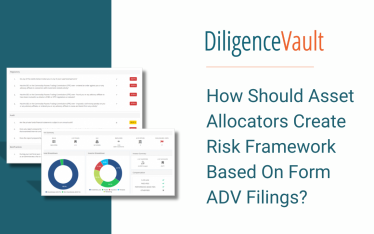The investment management industry has been leveraging terabytes of data, even before the phrase “big data” got coined. Firms like Bloomberg and Reuters led the first big wave in capital markets. Today, big data is being recognized and packaged in many forms, and comes from various sources: social media, corporate data, consumer data, environmental data, or even industry specific data (shopping, shipping, healthcare, consumer, etc.). The velocity, relevance, and applicability of data points such as number of cars in a parking lot of a store, internet traffic, imagery, and even tone of voice on conference calls are wide ranging.
Investment and operational data
Within the last decade, newer ventures have capitalized on opportunities to mine data and generate data sets, and are proving to be key differentiators, particularly for quantitative investment strategies. Select firms in this space have been early adopters and have been investing in data and tech to simplify complexity, amplify returns, and accelerate growth.
But the industry overall is still behind, and is gradually expanding past traditional research houses into purchasing of data sets, especially with implications from regulations such as Mifid II. Further, fee pressure and scrutiny over performance are creating necessary conditions for asset managers to innovate. The trend of leveraging data is extending beyond the investing world into operational and regulatory processes. Custodians, banks, and administrators are investing in automation, data analytics, and data visualization.
So how do you stand out?
Firms need to start with a firm-wide strategy inclusive of operational, compliance, human resources and client servicing areas. And what about the end-investors, like fund of funds, endowments, family offices, and outsourced CIOs? They, too, can significantly benefit from trends in data technologies by having the right information at the right time in the right hands.
But to be successful, a strategic mandate needs to be enriched with an implementation model that suits them best.
These are 4 ways firms can go about it:
- Build it internally by competing for the best minds and establishing an internal infrastructure and culture.
- Partner with service providers, who know the business model and are integrated with your current infrastructure.
- Incubate it. Work with early stage ventures via accelerators and incubators. Learn to utilize POCs (“Proof of concepts”)
- Divide the focus across different functions, and pick the right approach from the three aforementioned execution modes
Like any other strategy, the implementation that a firm picks is dependent on its particular goals.
What questions need to be asked?
- Does your team have the expertise or bandwidth to build out a data strategy? If not, could you seamlessly integrate external solutions?
- What are the benefits and challenges that result from implementation? Does the former outweigh the latter?
- What are the economics like, today and in the long-run?
- What is the timeline for implementation?
- Is the goal to: (a) help develop new distribution channels, (b) construct new products, (c) make better and faster investment decisions, (d) enhance governance, (e) save time and money, or (f) all of the above?
Formulating answers to these questions and figuring out an implementation plan is key. With 2017 already underway and strategies for big data innovation taking place across various industries, it’s about time the investment management industry began to leverage data not only to drive performance, but to also accelerate decision making. Save time and cut costs by streamlining processes with data-driven technology, so that you can focus on things that matter like investment decisions and fundraising.



